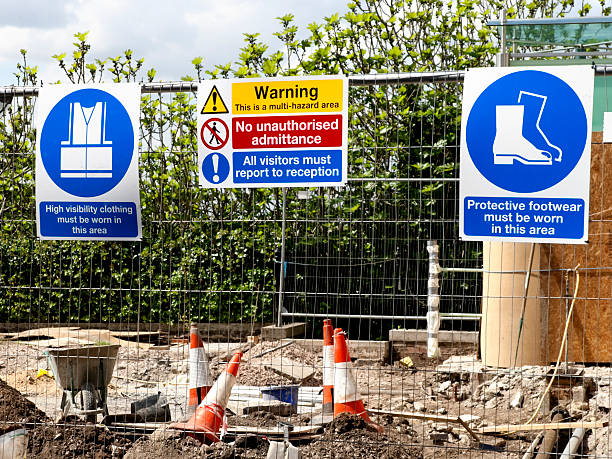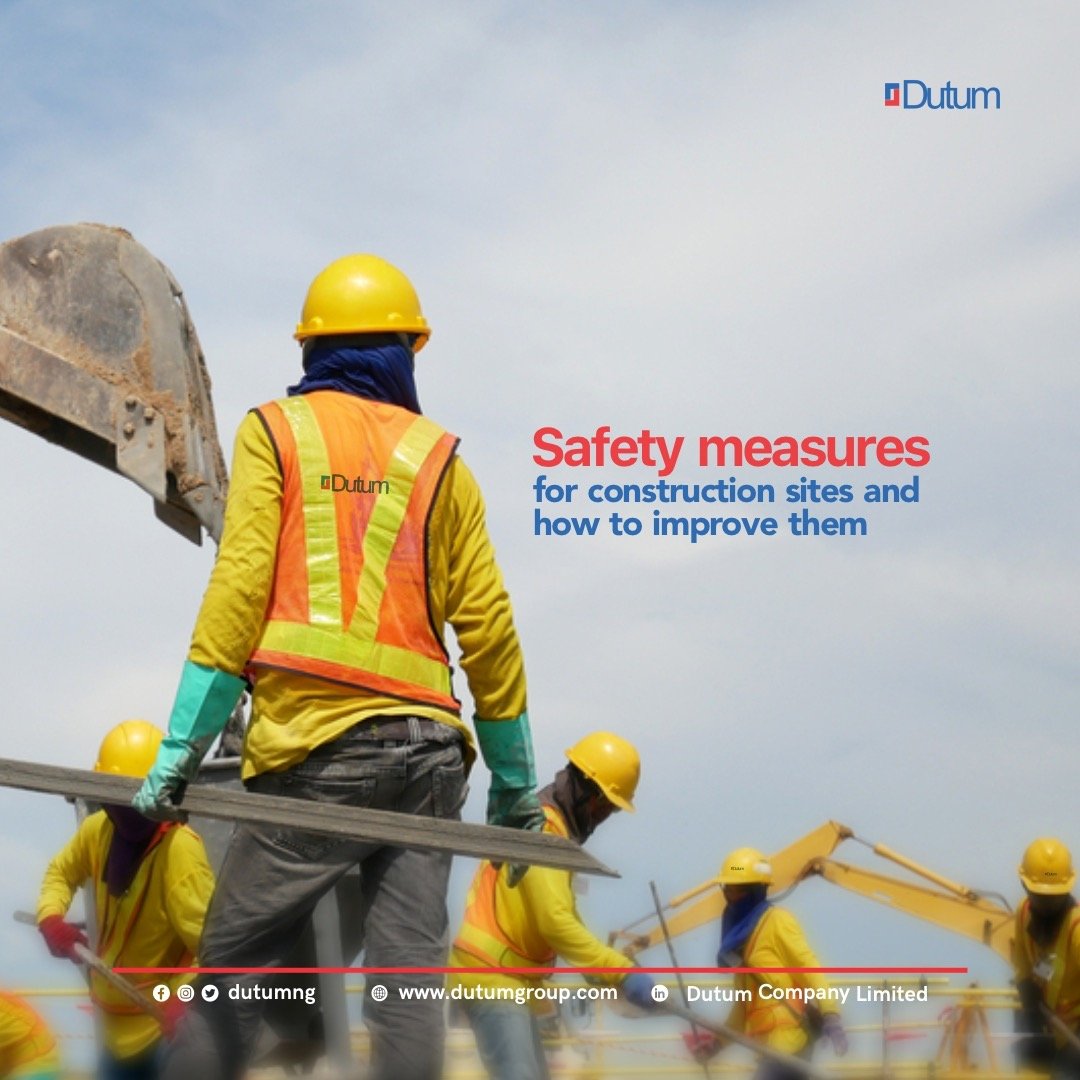The construction industry is a critical sector of the Nigerian economy. It provides employment opportunities for thousands of people and contributes significantly to the country’s Gross Domestic Product (GDP). However, it is also known for being a hazardous industry. Workers on construction sites are exposed to various risks and hazards daily. Therefore, implementing safety measures on construction sites is essential to ensure worker safety and prevent accidents.
Top Safety Measures for Construction Sites
- Personal Protective Equipment (PPE)
- Hazard Communication
- Fall Protection
- Scaffolding Safety
- Electrical Safety
1. Personal Protective Equipment (PPE)
Personal Protective Equipment is essential on construction sites. PPE protects workers from hazards that could cause injuries or illness. The types of PPE used in construction sites include:
- Safety helmets: Protects the head from falling objects and impact.
- Safety boots: Protects the feet from falling objects and punctures.
- Gloves: Protects the hands from cuts, punctures, and chemical exposure.
- Safety glasses: Protects the eyes from flying debris and chemical exposure.
- Earplugs: Protects the ears from loud noise.
- Respirators: Protects the lungs from dust and harmful fumes.
The importance of PPE cannot be overemphasized. Employers must ensure that workers wear appropriate PPE for their job tasks to prevent accidents and injuries.

2. Hazard Communication
Hazard communication involves informing workers about potential hazards on construction sites. Employers must provide workers with information about the risks and hazards associated with their job tasks. Workers should be trained on how to recognize and avoid hazards. Examples of hazard communication measures include:
- Signage and labeling: Employers must use clear and visible signage and labeling to identify hazards on construction sites.
- Training on hazard communication: Workers should be trained on how to recognize and avoid hazards on construction sites.

3. Fall Protection
Falls are the leading cause of death on construction sites. Construction companies must implement measures to prevent falls. Examples of fall protection measures include:
- Guardrails: These are barriers that prevent workers from falling from heights.
- Safety nets: These are nets that catch workers in the event of a fall.
- Personal fall arrest systems: These are systems that prevent workers from falling by using a harness and anchor point.
The importance of fall protection cannot be overemphasized. Falls from heights can cause severe injuries and fatalities.
Related: Top 3 things to know about construction safety nets
Types of foundation used in the Nigerian construction industry
4. Scaffolding Safety
Scaffolding is commonly used in construction sites. However, it can be hazardous if not erected correctly. Workers must be trained on how to erect and use scaffolds safely. Examples of scaffolding safety measures include:
- Erecting and dismantling scaffolds properly: Scaffolds should only be erected and dismantled by trained and competent workers. Employers must ensure that scaffolds are erected and dismantled according to the manufacturer’s specifications.
- Inspecting scaffolds before use: Employers must ensure that scaffolds are inspected before each use. Any defects or damages must be repaired before workers can use the scaffold.
- Using the right scaffold for the job: Employers must ensure that the right type of scaffold is used for the job. Scaffolds must be able to support the weight of workers and materials.
- Providing guardrails and toe boards: Employers must ensure that scaffolds have guardrails and toe boards to prevent workers from falling.
Related: The Top 10 Construction Equipment Used In Nigeria
The Role of Technology in the Nigerian construction industry
5. Electrical Safety
Electrical hazards are common on construction sites. Workers are exposed to electrical hazards when working on electrical installations, tools, and equipment. Employers must implement measures to prevent electrical hazards. Examples of electrical safety measures include:
- Using grounded or double-insulated tools: Employers must ensure that workers use grounded or double-insulated tools when working with electricity.
- Providing Ground Fault Circuit Interrupters (GFCIs): GFCIs are devices that protect workers from electric shock. Employers must ensure that GFCIs are installed in all areas where workers are exposed to electrical hazards.
Related blog posts: Best practices for waste management on construction sites in Nigeria
How To Choose The Right Contractor For Your Construction Project
Benefits of Implementing Safety Measures on Construction Sites
- Improved worker safety and health
- Reduced risk of accidents and injuries
- Increased productivity and efficiency
- Enhanced company reputation and credibility
1. Improved worker safety and health
Implementing safety measures on construction sites significantly improves worker safety and health. Workers are less likely to suffer injuries or illnesses, leading to increased productivity and efficiency.
2. Reduced risk of accidents and injuries
Implementing safety measures on construction sites reduces the risk of accidents and injuries. Workers are protected from hazards and are less likely to suffer injuries or fatalities.
3. Increased productivity and efficiency
Safety measures such as PPE, hazard communication, fall protection, scaffolding safety, and electrical safety can significantly improve productivity and efficiency. When workers feel safe, they are more likely to be productive and efficient.
4. Enhanced company reputation and credibility
Construction companies that prioritize safety measures on their construction sites have an enhanced reputation and credibility. Clients and stakeholders are more likely to trust and support companies that prioritize worker safety.
Related blog posts: 10 common mistakes to avoid during construction
Overview of the Roles and Responsibilities of construction site personnel
The Importance of Quality Control in Construction
10 Benefits of Hiring an Indigenous Construction Company in Nigeria
Legal Requirements for Safety Measures in Construction Sites
Several laws and regulations govern safety measures in construction sites in Nigeria. These laws and regulations aim to promote safe working conditions and protect workers from harm. The Federal Ministry of Labour and Employment is responsible for enforcing these laws. Some of the laws and regulations that apply to construction sites in Nigeria include:
- The Factories Act: This act stipulates that employers must provide safe working conditions for their employees. It also requires employers to take measures to prevent accidents and injuries.
- Occupational Health and Safety Act: This act provides guidelines for ensuring workplace safety and health. It requires employers to implement measures to prevent accidents and injuries and provide workers with Personal Protective Equipment (PPE).
- Construction Industry Safety and Health Regulations: These regulations provide guidelines for ensuring safety and health in the construction industry. They require construction companies to implement measures to prevent accidents and injuries and provide workers with training on hazard communication, fall protection, and scaffolding safety.
Penalties for non-compliance with safety regulations can be severe. Construction companies that fail to comply with safety regulations risk losing their license to operate and being fined or prosecuted.
Conclusion on safety measures for construction sites in Nigeria
In conclusion, implementing the best safety measures for construction sites in Nigeria is not only a legal requirement but also a moral obligation for every construction company operating in the country. From providing Personal Protective Equipment (PPE) to workers to conducting regular safety audits, there are various steps that can be taken to ensure that construction sites are safe for workers and visitors.
However, it is important to note that safety is not just about compliance with regulations, but also about creating a culture of safety that is ingrained in every aspect of a company’s operations. This requires a commitment from management to prioritize safety and provide the necessary resources to ensure that safety measures are effectively implemented and monitored.
At the end of the day, the success of any construction project is not just measured by its completion but also by the safety of those involved. If you are looking for a construction company that places safety as a top priority, look no further than our company. We believe that safety is not just a legal requirement but a moral obligation, and we are committed to implementing the best safety measures on all our construction sites. So, let us work together to create a safer construction industry in Nigeria by patronizing our company for your construction needs.
Related: Common Building materials used in Nigeria
Frequently Asked Questions
Q: What are the most common hazards on construction sites in Nigeria?
A: The most common hazards on construction sites in Nigeria include falls from height, struck-by incidents, electrical hazards, and fires/explosions.
Q: Who is responsible for safety on construction sites in Nigeria?
A: All stakeholders involved in the construction project, including employers, workers, contractors, and subcontractors, are responsible for safety on construction sites in Nigeria.
Q: What is the penalty for non-compliance with safety regulations on construction sites in Nigeria?
A: Non-compliance with safety regulations on construction sites in Nigeria can result in fines, imprisonment, or both.



9 Comments